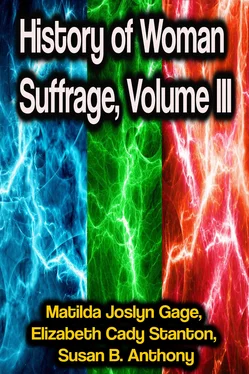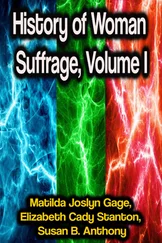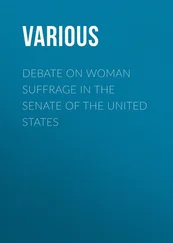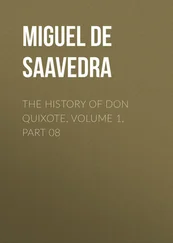Matilda Joslyn Gage, Elizabeth Cady Stanton, Susan B. Anthony
History of Woman Suffrage, Volume III
✓ VISIT OUR WEBSITE:
LyFreedom.com
CHAPTER XXVII.
THE CENTENNIAL YEAR—1876.
The Dawn of the New Century—Washington Convention—Congressional Hearing—Woman's Protest—May Anniversary—Centennial Parlors in Philadelphia—Letters and Delegates to Presidential Conventions—50,000 Documents sent out—The Centennial Autograph Book—The Fourth of July—Independence Square—Susan B. Anthony reads the Declaration of Rights—Convention in Dr. Furness' Church, Lucretia Mott, Presiding—The Hutchinson Family, John and Asa—The Twenty-eighth Anniversary, July 19, Edward M. Davis, Presiding—Letters, Ernestine L. Rose, Clarina I. H. Nichols—The Ballot-Box —Retrospect—The Woman's Pavilion.
During the sessions of 1871-72 congress enacted laws providing for the celebration of the one-hundredth anniversary of American independence, to be held July 4, 1876, in Philadelphia, the historic city from whence was issued the famous declaration of 1776.
The first act provided for the appointment by the president of a "Centennial Commission," consisting of two members from each State and territory in the Union; the second incorporated the Centennial Board of Finance and provided for the issue of stock to the amount of $10,000,000, in 1,000,000 shares of $10 each. It was at first proposed to distribute the stock among the people of the different States and territories according to the ratio of their population, but subscriptions were afterward received without regard to States. The stockholders organized a board of directors, April 1, 1873. The design of the exhibition was to make it a comprehensive display of the industrial, intellectual and moral progress of the nation during the first century of its existence; but by the earnest invitation of our government foreign nations so generally participated that it was truly, as its name implied, an "International and World's Exposition."
The centennial year opened amid the wildest rejoicing. In honor of the nation's birthday extensive preparations were made for the great event. Crowds of people eager to participate in the celebration, everywhere flocked from the adjacent country to the nearest village or city, filling the streets and adding to the general gala look, all through the day and evening of December 31, 1875. From early gas-light upon every side the blowing of horns, throwing of torpedos, explosion of fire-crackers, gave premonition of more enthusiastic exultation. As the clock struck twelve every house suddenly blossomed with red, white and blue; public and private buildings burst into a blaze of light that rivaled the noon-day sun, while screaming whistles, booming cannon, pealing bells, joyous music and brilliant fire-works made the midnight which ushered in the centennial 1876, a never-to-be-forgotten hour.
Portraits of the presidents from Washington and Lincoln laurel-crowned, to Grant, sword in hand, met the eye on every side. Stars in flames of fire lighted the foreign flags of welcome to other nations. Every window, door and roof-top was filled with gay and joyous people. Carriages laden with men, women and children in holiday attire enthusiastically waving the national flag and singing its songs of freedom. Battalions of soldiers marched through the streets; Roman candles, whizzing rockets, and gaily-colored balloons shot upward, filling the sky with trails of fire and adding to the brilliancy of the scene, while all minor sounds were drowned in the martial music. Thus did the old world and the new commemorate the birth of a nation founded on the principle of self-government.
The prolonged preparations for the centennial celebration naturally roused the women of the nation to new thought as to their status as citizens of a republic, as well as to their rightful share in the progress of the century. The oft-repeated declarations of the fathers had a deeper significance for those who realized the degradation of disfranchisement, and they queried with each other as to what part, with becoming self-respect, they could take in the coming festivities.[1] Woman's achievements in art, science and industry would necessarily be recognized in the Exposition; but with the dawn of a new era, after a hundred years of education in a republic, she asked more than a simple recognition of the products of her hand and brain; with her growing intelligence, virtue and patriotism, she demanded the higher ideal of womanhood that should welcome her as an equal factor in government, with all the rights and honors of citizenship fully accorded. During the entire century, women who understood the genius of free institutions had ever and anon made their indignant protests in both public and private before State legislatures, congressional committees and statesmen at their own firesides; and now, after discussing the right of self-government so exhaustively in the late anti-slavery conflict, it seemed to them that the time had come to make some application of these principles to the women of the nation. Hence it was with a deeper sense of injustice than ever before that the National Suffrage Association issued the call for the annual Washington Convention of 1876:
Call for the Eighth Annual Washington Convention.—The National Woman Suffrage Association will hold its Eighth Annual Convention in Tallmadge Hall, Washington, D. C., January 27, 28, 1876. In this one-hundredth year of the Republic, the women of the United States will once more assemble under the shadow of the national capitol to press their claims to self-government.
That property has its rights, was acknowledged in England long before the revolutionary war, and this recognized right made "no taxation without representation" the most effective battle-cry of that period. But the question of property representation fades from view beside the greater question of the right of each individual, millionaire or pauper, to personal representation. In the progress of the war our fathers grew in wisdom, and the Declaration of Independence was the first national assertion of the right of individual representation. That "governments derive their just powers from the consent of the governed," thenceforward became the watchword of the world. Our flag, which beckons the emigrant from every foreign shore, means to him self-government.
But while in theory our government recognizes the rights of all people, in practice it is far behind the Declaration of Independence and the national constitution. On what just ground is discrimination made between men and women? Why should women, more than men, be governed without their own consent? Why should women, more than men, be denied trial by a jury of their peers? On what authority are women taxed while unrepresented? By what right do men declare themselves invested with power to legislate for women? For the discussion of these vital questions friends are invited to take part in the convention.
Matilda Joslyn Gage, President , Fayetteville, N. Y.
Susan B. Anthony, Ch'n Ex. Com. , Rochester, N. Y.
At the opening session of this convention the president, Matilda Joslyn Gage, said:
I would remind you, fellow-citizens, that this is our first convention in the dawn of the new century. In 1776 we inaugurated our experiment of self-government. Unbelief in man's capacity to govern himself was freely expressed by every European monarchy except France. When John Adams was Minister to England, the newspapers of that country were filled with prophecies that the new-born republic would soon gladly return to British allegiance. But these hundred years have taught them the worth of liberty; the Declaration of Independence has become the alphabet of nations; Europe, Asia, Africa, South America and the isles of the sea, will unite this year to do our nation honor. Our flag is everywhere on sea and land. It has searched the North Pole, explored every desert, upheld religious liberty of every faith and protected political refugees from every nation, but it has not yet secured equal rights to women.
Читать дальше












